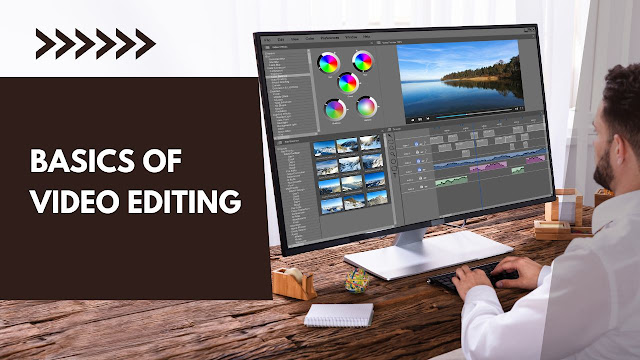Video editing is an essential skill for anyone interested in creating compelling visual content. Whether you're a beginner or have some experience, understanding the basics of video editing is crucial to produce professional-looking videos. In this comprehensive guide, we will walk you through the fundamental concepts, techniques, and tools involved in video editing. Let's dive in!
1. Understanding the Editing Process:
Before you start editing, it's essential to understand the overall video editing process. We'll explore the key steps involved, such as organizing your footage, making rough cuts, refining the sequence, adding transitions, enhancing audio, and exporting the final product. This section will provide you with a solid foundation to approach your editing projects effectively.
2. Choosing the Right Video Editing Software:
There is a wide range of video editing software available for different types of video editing, each with its own set of features and learning curves. We'll discuss popular options like Adobe Premiere Pro, Final Cut Pro, and DaVinci Resolve, outlining their strengths, limitations, and target users. By understanding the different software options, you can choose the one that best suits your needs and budget.
3. Importing and Organizing Footage:
Efficiently managing your footage is crucial for a smooth editing workflow. We'll guide you through the process of importing your video files, organizing them into bins or folders, and creating a project structure that allows easy access to your media assets. Proper organization saves time and helps you stay focused on the creative aspects of editing.
4. Timeline Editing: Trimming and Arranging Clips:
The timeline is where the magic happens in video editing. We'll cover the essential techniques for trimming and arranging clips to create a coherent and visually engaging sequence. You'll learn how to cut out unwanted footage, split and combine clips, rearrange segments, and create a smooth flow from one shot to another.
5. Enhancing Visuals: Transitions, Effects, and Titles:
In this section, we'll explore various visual elements that can enhance the overall look and feel of your video. We'll discuss different types of transitions, such as cuts, fades, and wipes, and when to use them effectively. Additionally, we'll delve into applying effects and filters, incorporating graphics and titles, and implementing basic color correction techniques to make your visuals more polished and impactful.
6. Working with Audio: Mixing and Sound Design:
Audio is a crucial component of video editing. We'll cover techniques for adjusting audio levels, removing background noise, adding music tracks, and integrating sound effects to enhance the overall audio experience. You'll learn how to create a balanced mix and ensure that the audio complements the visuals seamlessly.
7. Exporting and Sharing Your Video:
Once you've completed the editing process, it's time to export your video in the appropriate format for sharing or distribution. We'll guide you through the various export settings, including resolution, file formats, and codecs. Additionally, we'll discuss platforms for sharing your videos, such as YouTube, social media, or your website.
Conclusion:
By grasping the basics of video editing, you're on your way to becoming a proficient video editor. Remember, practice makes perfect, so don't hesitate to experiment and explore new techniques as you develop your skills. With this comprehensive guide as your foundation, you're ready to create stunning videos that captivate and engage your audience. Happy editing!

